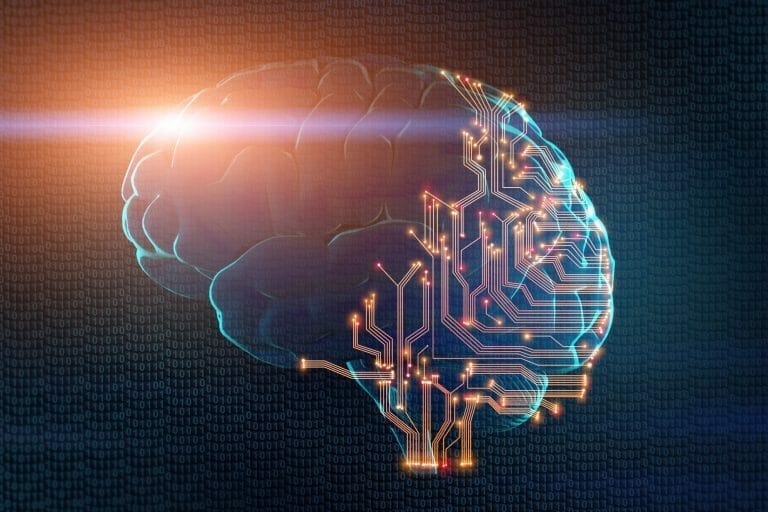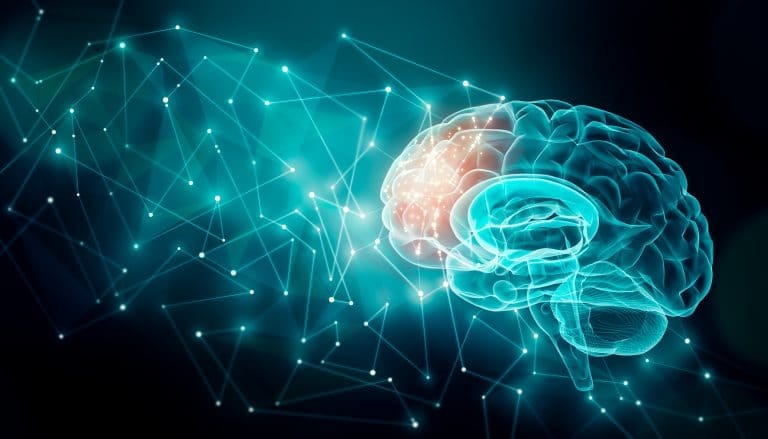1. The Prefrontal Cortex—In Context
I have long been fascinated and obsessed by the incredible complexity of the human brain. The reason for this is perhaps obvious: it’s one of the most intricate and sophisticated mechanisms on the planet. But the prefrontal cortex—the part that makes us fully human—stands out more than most.
Without it we’d be at the mercy of whatever urges and emotions took us in the moment: prone to interrupting others, forgetting appointments, and responding with aggression to things that didn’t go our way.
But with it—we have the option to behave rationally: we can harness the shifting energies inside ourselves and direct them towards a higher purpose—say building a rewarding career or seeking out an attractive partner.

Part One in this essay explored how the insula—our brain’s biological melting pot—is responsible for much of the crossover between pain, mental wellbeing and pathological risk aversion.
We discovered that suffering provides considerable neurological benefits, and that, in turn, those who embrace it—who approach their negative experiences on the front foot—boost not only their mood but also their capacity for risk taking behaviour.
Discomfort, however, also shapes the thinking and planning parts of the brain: particularly the connectivity between the prefrontal cortex and regions inside the brain responsible for motivation and thought processing.
And the thing is, these bridging brain circuits have tremendous consequences for how we live our lives. Teenagers, for example, haven’t yet fully integrated the prefrontal cortex with their emotional centres, leading them to act rashly and make impulsive decisions. Those who suffer from ADHD, on the other hand, deal with compromised connections between the prefrontal cortex and areas of their brain related to concentration.
So this will be the type of dynamic I’ll be delving into today. Drawing on recent findings, I aim to show you how dealing with unpleasant experiences—vis-a-vie the prefrontal cortex and its connectivity to the wider brain—has the potential to not only boost motivation, but also keep the mind lucid and lubricated.
2. The Blueprint Behind Motivation
Whatever the weather, dedicated runners pound the streets of towns and cities near you to keep themselves fit. Wannabe doctors sacrifice years of their lives studying the ins and outs of medicine. And writers spend many a long hour glued to their desks. Considering all the competing distractions and novelties offered by the modern world, how on earth do any of them manage it?
Despite motivation ultimately originating from much deeper inside the brain—inside the limbic system—it still needs to be aligned with the prefrontal cortex. A key mechanism, the subgenual cingulate cortex, is designed to harness feelings of motivation and positivity generated from within the limbic system and amplify these impulses in line with the thinking and planning parts of our brain.

The subgenual cingulate cortex, put another way, aligns basal feelings of motivation with our stated goals and ambitions: helping us stick with something we find mind-numbingly boring, or physically taxing, in order to reap the rewards in the distant future.
And yet, without much in the way of suffering, without much in the way of discomfort, this perplexing neural mechanism—through a remarkable sequence of events—begins to break down.
3. How Pain Boosts Motivation
Wait, what?! Well let me explain. Say for instance I begin long-distance running: my brain will activate the right inferior frontal cortex, a separate mechanism designed to suppress pain signals and push me through the inevitable discomfort.
Without much in the way of pain, however, the right inferior frontal cortex begins to look for other things to get its greasy arms around instead: namely the subgenual cingulate cortex. That’s right, this mechanism, in a very tangible way, begins to suppress my motivational drive.
Just think on it for a moment: Going for long periods without facing and overcoming discomfort, be it mental or physical, deprives me of my desire to pursue long term goals. The right inferior frontal cortex will, in these cases, throttle my brain’s motivation conduit; triggering a gradual collapse in mental stamina and discipline.
“Sometimes we have to step out of our comfort zones. We have to break the rules. And we have to discover the sensuality of fear. We need to face it, challenge it, dance with it.”
—Kyra Davis | Binding Agreement
Is it any wonder, for example, that more than 280 million people, primarily in developed countries, have ended up afflicted with depression? Is it any wonder that listlessness and lethargy are becoming more and more common throughout the modern world? Society has taught us to do all we can to avoid pain—the very thing we need to maintain motivation and pursue long term goals.
There is some good news however. Researchers believe that by redirecting this mechanism back towards its proper function—namely pushing us through the pain threshold—we can free up the subgenual cingulate cortex and develop new treatment paths for longstanding problems like apathy and depression.
It’s one of the reasons why those who practice extreme sports tend to report higher levels of satisfaction. Their efforts to suppress pain, even unintentionally, act to fine-tune their motivation and keep them living life on the front foot.
Okay. Let’s try to simplify a bit before we move on. Basically we humans have neural mechanisms embedded within our brains designed to help us overcome severe trauma and discomfort.
By using these mechanisms as they’re meant to be used, rather than letting them degrade and malfunction, those who struggle to sustain positive emotions can learn to iron out their psychological kinks. They can hurt themselves happy.
Keep in mind however this is not the type of discomfort that’s passively tolerated—the type seen so often in the modern world. This is the type that’s actively embraced—and overcome.
4. How Pain Boosts Mental Clarity
Have you ever tried to knuckle down to work only to find yourself scrolling through social media? Or been listening to your girlfriend tell you about her day, only to find yourself, well, wondering what’s for dinner tonight?
Don’t worry you’re not alone. Psychologists, neurologists, and neuroscientists now acknowledge the default state of human mind is to wander—especially when we have nothing more exciting to do.
One Harvard study tracked participants and found nearly half their waking hours were devoted to thinking about something other than what they were doing. That might be as imagined, but the study concluded by saying: “The human mind is a wandering mind, and a wandering mind is an unhappy mind.”
To be fair, thoughts often have a way of seizing our attention so that we hardly notice the present moment. We worry about stuff about to happen, obsess about things that have already happened, or find ourselves unable to switch off from the day’s work.
And it’s also true, I think, that for many of us it gets even worse. The mind is hardly, if ever, still, as if our unruly thoughts were a tribe of monkeys squabbling and chattering in the branches of our consciousness. We’re planning what we’ll eat for dinner, wondering when the new season of that one show comes out, or speculating about our office frenemy’s salary. Day-by-day, we live in a state of constant mental churn and meaningless chatter.
And, much like the Harvard study suggests, these thoughts often propel us into melancholy. One experiment even found participants preferred to electrocute themselves rather than deal with the stress that comes with extended periods of boredom!
But I’ll let you into a secret—and this is the important point—not everybody suffers to the same extent. Daniel Goleman and Richard Davidson show us how people can restore tranquillity in their book: The Science of Meditation.
In it, they champion one neural mechanism in particular—a brain circuit called the dorsolateral prefrontal area—responsible for managing activity in the default-mode-network.
“The dorsolateral prefrontal area springs into action anytime we intentionally attempt to quiet our agitated mind,” they write. “For instance, when we try to think of something more pleasant than an upsetting encounter that keeps running over and over in our mind.”
Those with highly developed dorsolateral prefrontal areas, they go on to explain, will find it much easier to quell an agitated mind: judiciously editing out unwanted thoughts that might otherwise hijack their minds. By the same token, those who lack strong dorsolateral prefrontal areas will find themselves tending to fixate on what’s troubling them—a root cause of everyday angst.
““A man with clarity reaches his goal sooner than the man with confidence.”
—Amit Kalantri | Wealth of Words
I know what you’re thinking and yes, between you and me there’s a perfectly respectable argument—one that Goleman and Davidson do indeed make—that meditation is the best way to reinforce this brain circuit.
MRI scans generally support this notion, revealing the brains of meditators benefit from having larger and more active dorsolateral prefrontal areas than control groups—and the effect is even more pronounced among experienced meditators.
But, interestingly, this isn’t our only option. Juergen Lorenz, Professor of Human Biology at Hamburg University, recently concluded a landmark study: “Keeping pain out of mind: the role of the DPA in pain modulation.” His research team discovered that the dorsolateral prefrontal area assists in managing discomfort, functioning alongside our old friend, the right inferior frontal cortex.
Rather than merely suppressing pain, however, Lorenz discovered this multipurpose mechanism effectively ring-fences painful sensations from our conscious perception: allowing us, in other words, to become psychologically ‘unbothered’ by unpleasantness. Discomfort still gets registered inside the brain, but its impact on our conscious mind is significantly diminished—representing a promising avenue for those suffering from chronic pain conditions.
And this raises a couple of interesting points. The first and most obvious is that time spent outside the comfort zone—whether emotionally or otherwise—helps us quell agitated thinking. Those who manage additional hardship—a practice Lorenz has shown to activate and strengthen the dorsolateral prefrontal area—stand to rewrite their neurological makeup in ways that keep the mind lucid and lubricated.
And indeed, this is proving to be the running theme throughout my research. By facing up to pain—by seeking out opportunities to meet it head on—we stand to reap psychological benefits that go well beyond endurance; we become better at managing our minds; we boost mental clarity; we live better and more fulfilling lives in general.
The second and more surprising point is that meditators tend to exhibit higher pain thresholds than control groups. “Experienced meditators respond differently to pain than novices do,” observes Sam Harris in his book: Waking Up. “They judge the intensity of an unpleasant stimulus the same, but find it to be less unpleasant. They also show reduced levels of anxiety while anticipating the onset of pain, as well as faster habituation to the stimulus once it arrives.”
The question then becomes why? Well, meditators tend to excel at calming their minds; a practice which, as I’ve explained, strengthens the dorsolateral prefrontal area. This mechanism, in turn, then becomes better able to ring-fence painful sensations from conscious awareness. Yet another example of our multifaceted brain in action.
5. Practical Next Steps
To speak in front of a large crowd. To put ourselves out there with members of the opposite sex. To push through fatigue and keep on running. These are the types of things that require us to disrupt our emotional equilibrium and step beyond the comfort zone.
In doing so, we activate a special set of neurological mechanisms—those able to clamp down and throttle unpleasant sensations—in the process helping us break through psychological boundaries and carve out a richer and more promising future for ourselves.
And this is the point I want to drive home. By facing up to suffering—say by going out for a hard run or completing a tough work assignment—we not only become stronger and more capable versions of ourselves but begin to develop a happier and healthier mindset as well.
Knowing this, what are the best ways we can embrace this altogether more proactive state of being? Well—the obvious ones really: Hit the gym, lift weights, cold showers, maybe start running.
But also, and perhaps more importantly, how about learning to tolerate some degree of social and emotional pain? Flirt with that attractive girl; step into that challenging leadership position at work, study for a new qualification; or simply speak out more in social situations. After all, social and emotional pain tends to etch itself into our psyche in a way that physical pain rarely does.
“I have realised; it’s during the times I am far outside my element that I experience myself the most—that I see and feel who I really am. I think that's what a comet is like, you see, a comet is born in the outer realms of the universe, but it's only when it ventures too close to our sun—or to other stars—that it releases the blazing "tail" behind it and shoots brazen through the heavens!”
—C. JoyBell C.
To keep things simple—think of positive pain like going to the gym. The more we endure it, the more we overcome it, the stronger certain neural mechanisms get to become, and the more control we can extend throughout the rest of our minds. Very feng shui—I know. But when you consider how modern technology is finding new ways to co-opt our brains—as is being seen though pornography and smartphone addictions, for example—the potential value to be gained through reimagining pain shouldn’t be underestimated.
Taking a step back, I’d recommend mixing these tactics with other more vanilla options: things like meditation, proper sleep, and learning. By doing so, you’ll be coming at happiness from both sides—and you’ll have a better chance of becoming the type of person you want to be.
Managing pain can lead to some remarkable upshots: ones that supercharge both mood and mental function. But discomfort does more than change our minds at the neurological level: it lays the foundations for strong and healthy social networks as well—and the implications can, in some senses, be even more profound. Find out more in my next article.
Read Next: How Relationships Help Us Heal—& How Pain Brings Us Closer Together
The post The Biological Overlaps Between Pain, Motivation & Mental Clarity appeared first on Lifestyle Harmonics.






Many thanks 😊